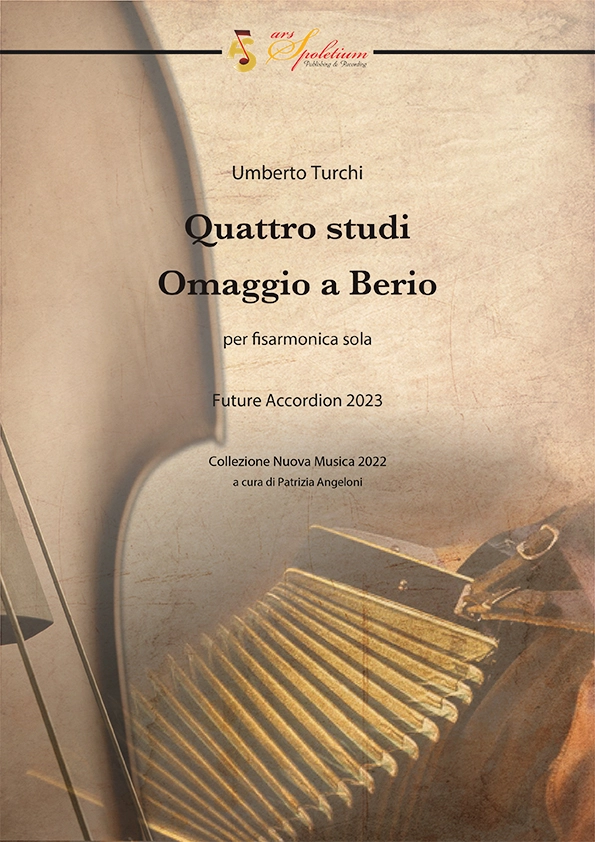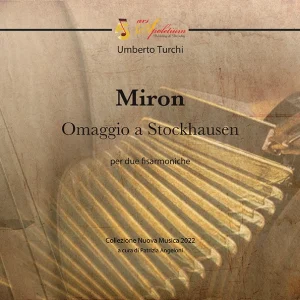Quattro studi – Omaggio a Berio (per fisarmonica sola)
Questi studi nascono dalla mia passione per Sequenza XIII (Chanson) di Luciano Berio. Alcuni dei gesti tecnici presenti nel brano, che ho trovato interessanti, insoliti, o tecnicamente impegnativi, sono stati presi come materiale di partenza per la stesura dei quattro studi.
(LA PARTITURA IN OGGETTO È DISPONIBILE SOLO NELLA VERSIONE PDF)
These etudes stem from my passion for Luciano Berio’s Sequenza XIII (Chanson). Some of the technical gestures in the piece, which I found interesting, unusual, or technically challenging, were taken as starting material for the writing of the four etudes.
(ONLY PDF VERSION)
These etudes stem from my passion for Luciano Berio’s Sequenza XIII (Chanson). Some of the technical gestures in the piece, which I found interesting, unusual, or technically challenging, were taken as starting material for the writing of the four etudes. The first piece retraces the polyphonic writing that opens the Sequenza for accordion; the second is a progressive rebuilding of a very peculiar technical gesture based on the bellows-shake; the third takes up a use of pre-composed chords that is rather rare in contemporary accordion writing, while the fourth is a sort of dreamy deconstruction of a theme by Mahler, which Berio himself had used as the leitmotif of the third movement of Sinfonia. Each piece bears as its title a line from the poem ‘acrostichetto’ that Edoardo Sanguineti dedicated to Luciano Berio on the occasion of his 70th birthday. What is missing is the last verse, in which the poet prefigured an 80th anniversary, which sadly never came. The song is written in real sounds (actual pitch), and unless otherwise specified the performer can freely choose the registers to be used.




